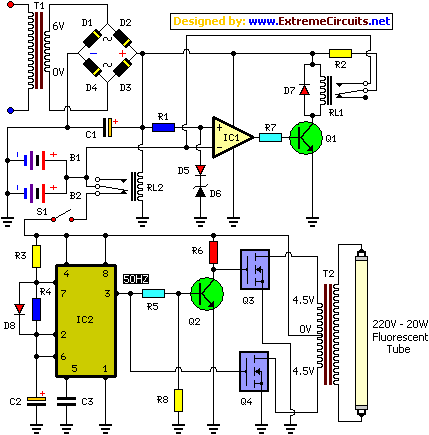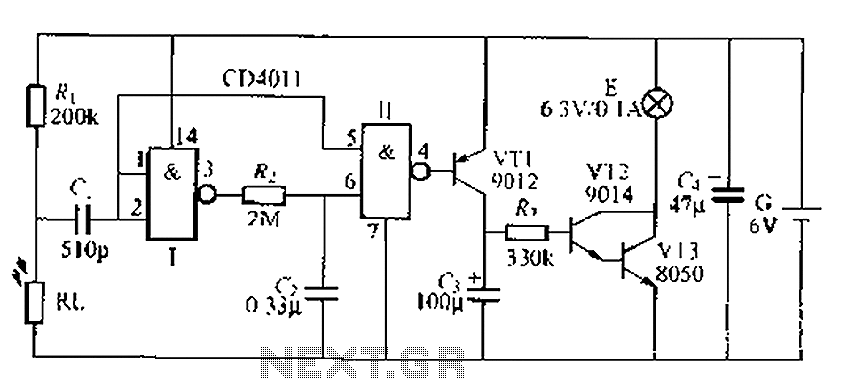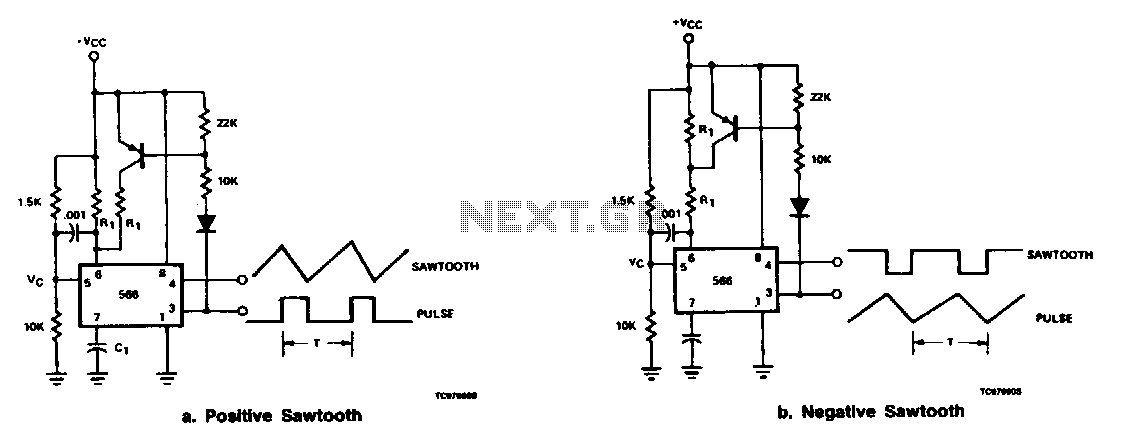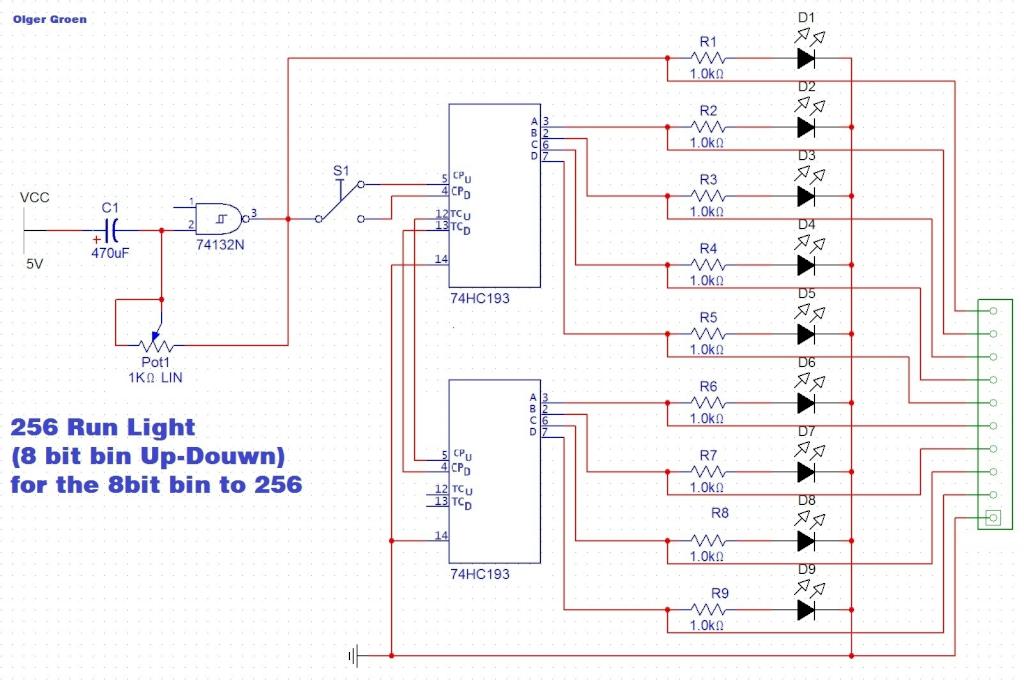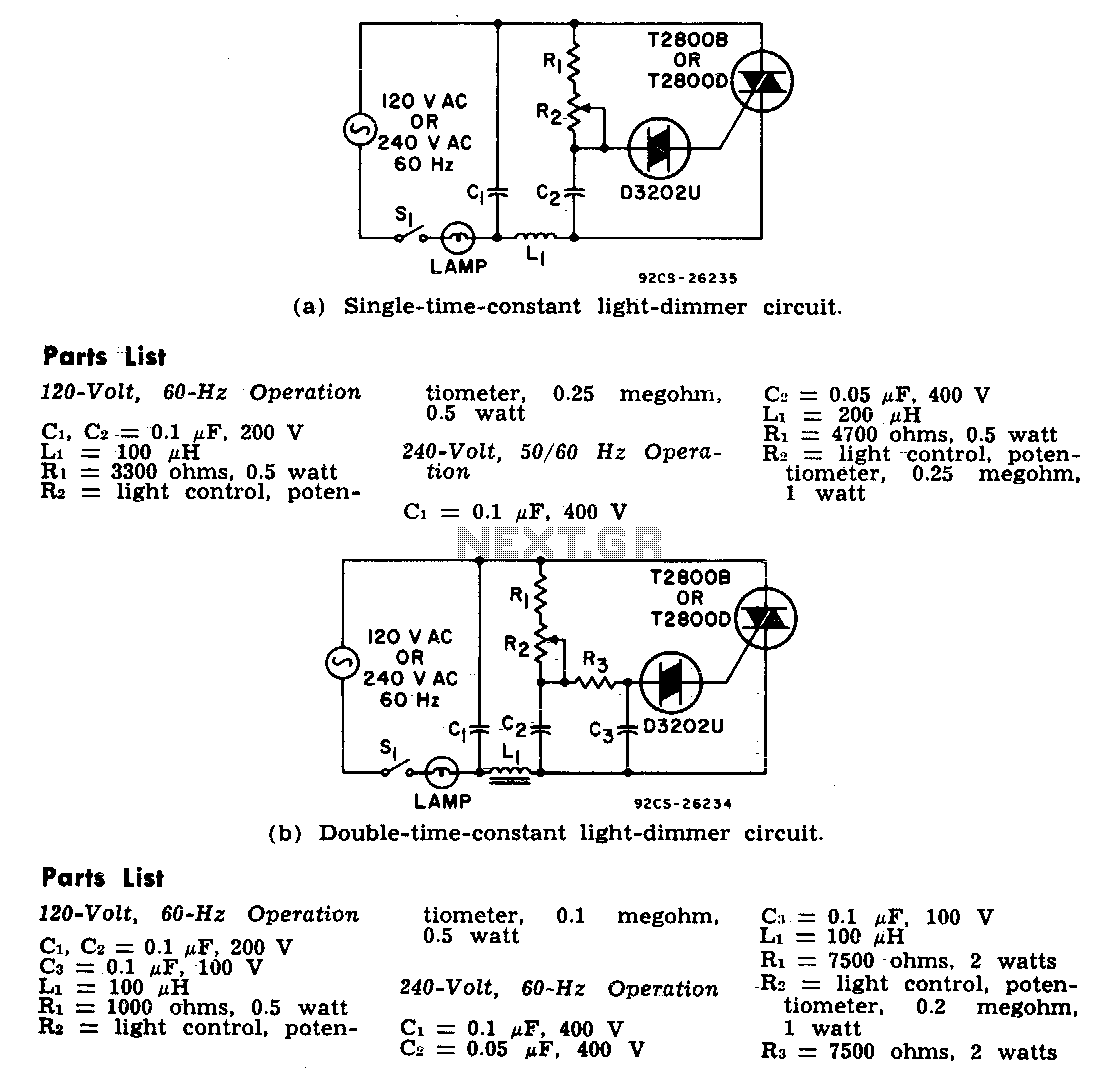
light weight data capture and signal generator
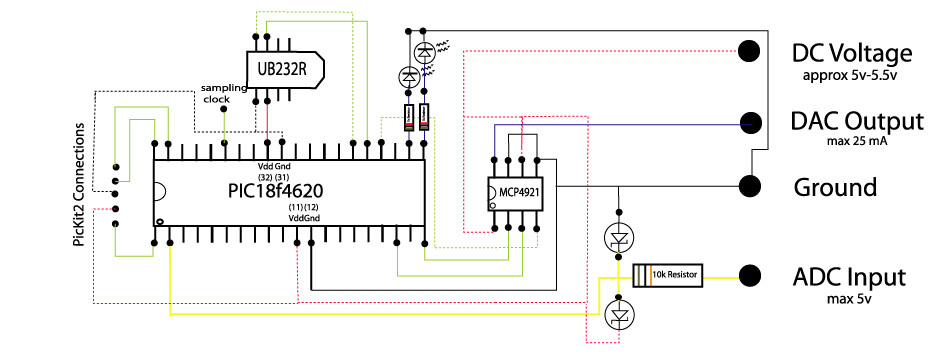
The circuit below demonstrates how to construct a DAQ_LITE device, accompanied by an image of the finished PCB board. It is important to note that the 80mA fuse depicted in the image and the nearby protection diode are recommended components but not essential. After assembling the circuit, programming the PIC18F4620 microcontroller is necessary to enable data reading and writing to and from a computer. MPLAB project files are available for this purpose. A PICkit programmer is required to program the PIC18F4620, and the schematic illustrates the necessary connections for the PICkit 2.
The DAQ_LITE circuit is designed for data acquisition purposes, leveraging the capabilities of the PIC18F4620 microcontroller. This microcontroller is equipped with multiple analog-to-digital converters (ADCs) that facilitate the conversion of analog signals into digital data, which can then be processed or transmitted to a computer for analysis.
The PCB layout should be carefully designed to accommodate the microcontroller, necessary passive components, and the recommended fuse and diode. The fuse serves as a protective measure against overcurrent conditions, while the diode provides reverse polarity protection, ensuring the circuit operates safely under varying input conditions.
The programming of the PIC18F4620 microcontroller is a critical step. The MPLAB project files, which are provided, include the necessary firmware to configure the microcontroller's ADC settings, communication protocols, and data handling routines. The PICkit programmer facilitates the uploading of this firmware to the microcontroller, enabling it to perform its intended functions effectively.
Connections for the PICkit 2 programmer are essential for programming the microcontroller. These connections typically include the MCLR (Master Clear), VDD (supply voltage), VSS (ground), and data lines for programming. Proper attention to these connections is crucial for successful programming and operation of the DAQ_LITE circuit.
Overall, the DAQ_LITE circuit is a versatile and efficient solution for data acquisition applications, providing a foundation for further development and integration into larger systems.The circuit below illustrates how to build your own daq_lite - also shown is a photo of a completed PCB board. Note that the 80mA fuse shown in the photo and the protection diode close to it are recommended but not necessary.
Once you`ve built the circuit you`ll need to program the PIC18f4620 microcontroller to set it up to read and write to/from a computer - MPLAB project files are availble here for this purpose. Note that you`ll need a PicKit programmer to porgamme the PIC18f4620 - the PicKit2 connections shown in the schematic are required solely for this purpose. 🔗 External reference
The DAQ_LITE circuit is designed for data acquisition purposes, leveraging the capabilities of the PIC18F4620 microcontroller. This microcontroller is equipped with multiple analog-to-digital converters (ADCs) that facilitate the conversion of analog signals into digital data, which can then be processed or transmitted to a computer for analysis.
The PCB layout should be carefully designed to accommodate the microcontroller, necessary passive components, and the recommended fuse and diode. The fuse serves as a protective measure against overcurrent conditions, while the diode provides reverse polarity protection, ensuring the circuit operates safely under varying input conditions.
The programming of the PIC18F4620 microcontroller is a critical step. The MPLAB project files, which are provided, include the necessary firmware to configure the microcontroller's ADC settings, communication protocols, and data handling routines. The PICkit programmer facilitates the uploading of this firmware to the microcontroller, enabling it to perform its intended functions effectively.
Connections for the PICkit 2 programmer are essential for programming the microcontroller. These connections typically include the MCLR (Master Clear), VDD (supply voltage), VSS (ground), and data lines for programming. Proper attention to these connections is crucial for successful programming and operation of the DAQ_LITE circuit.
Overall, the DAQ_LITE circuit is a versatile and efficient solution for data acquisition applications, providing a foundation for further development and integration into larger systems.The circuit below illustrates how to build your own daq_lite - also shown is a photo of a completed PCB board. Note that the 80mA fuse shown in the photo and the protection diode close to it are recommended but not necessary.
Once you`ve built the circuit you`ll need to program the PIC18f4620 microcontroller to set it up to read and write to/from a computer - MPLAB project files are availble here for this purpose. Note that you`ll need a PicKit programmer to porgamme the PIC18f4620 - the PicKit2 connections shown in the schematic are required solely for this purpose. 🔗 External reference

